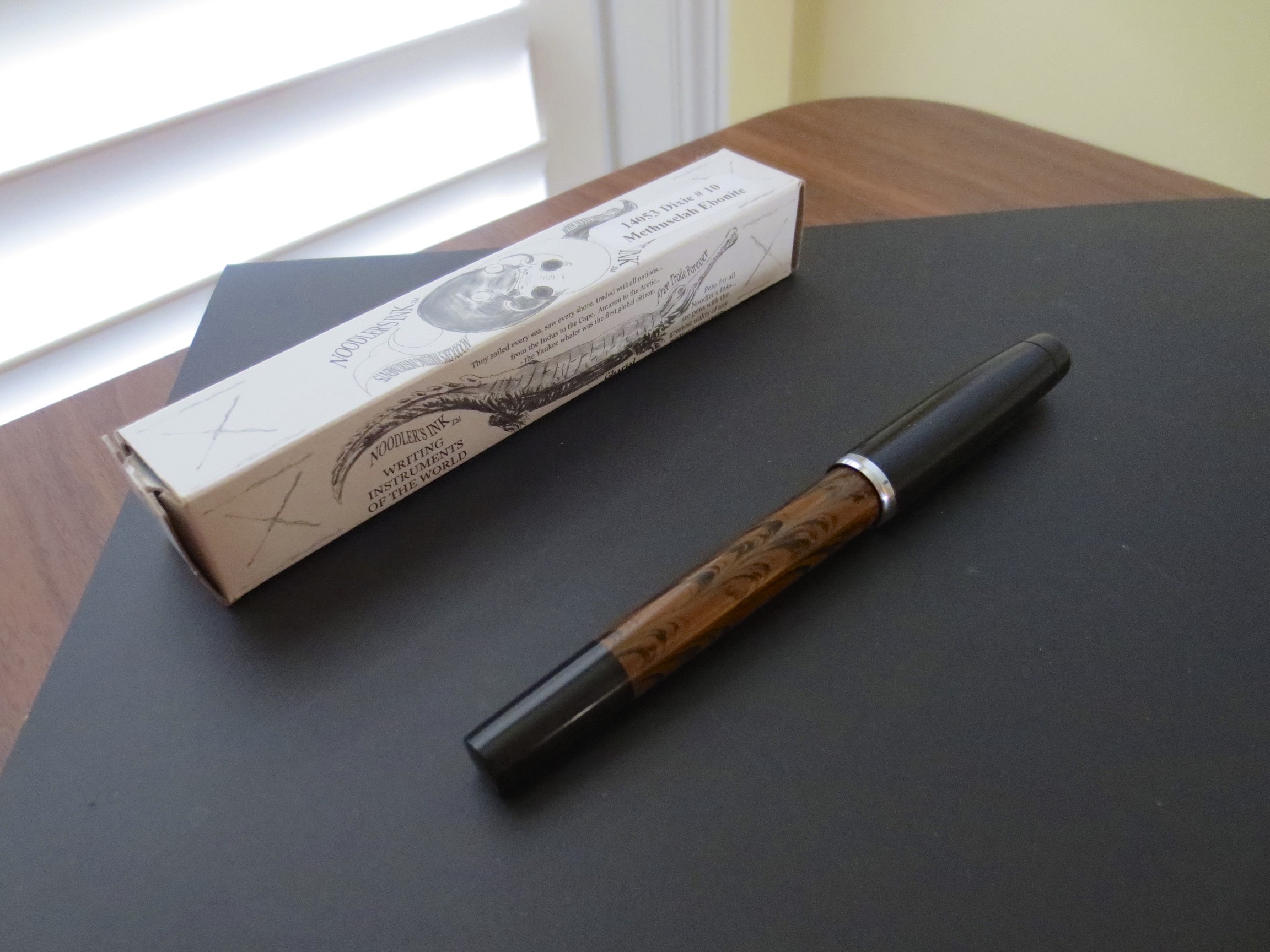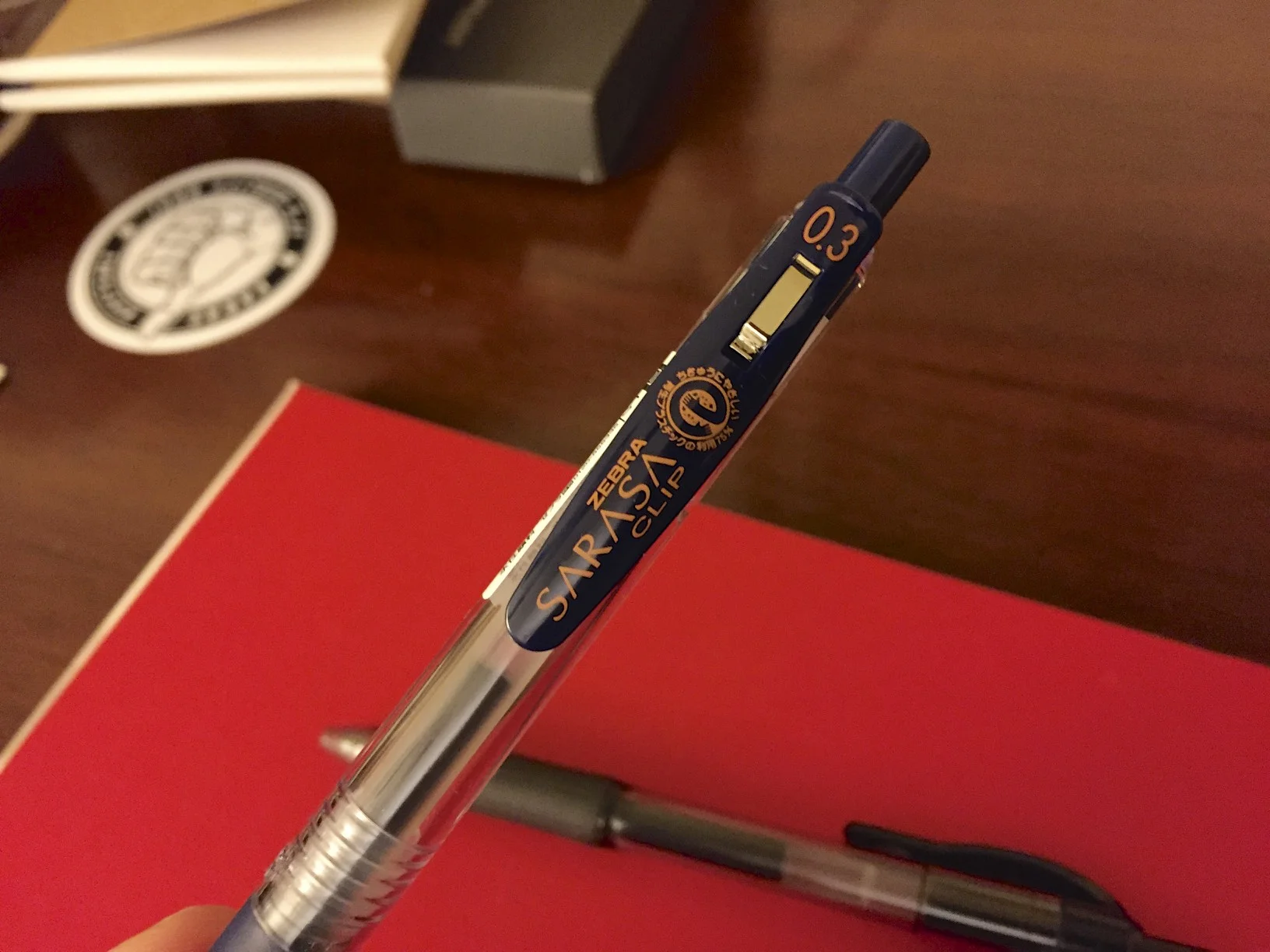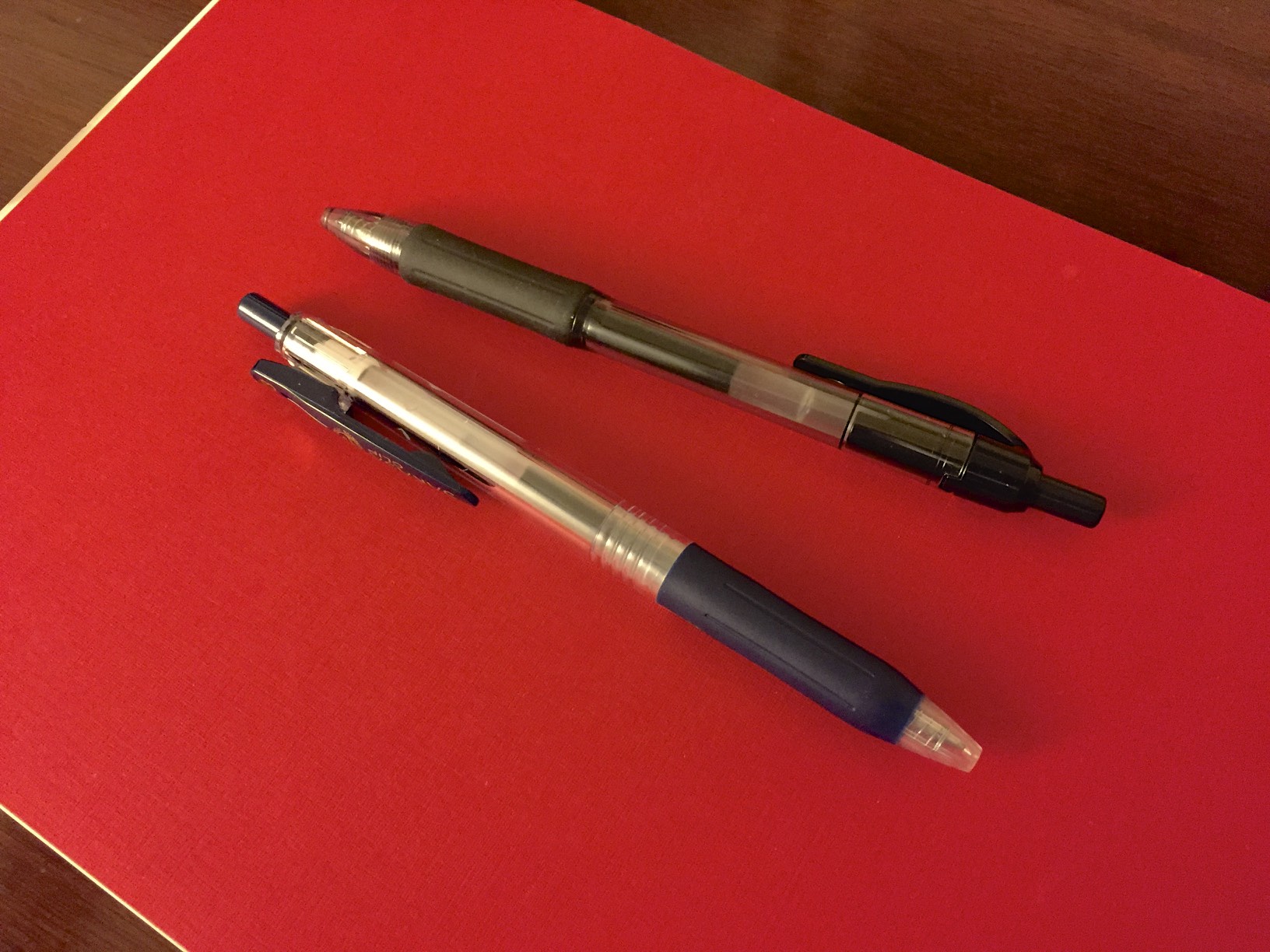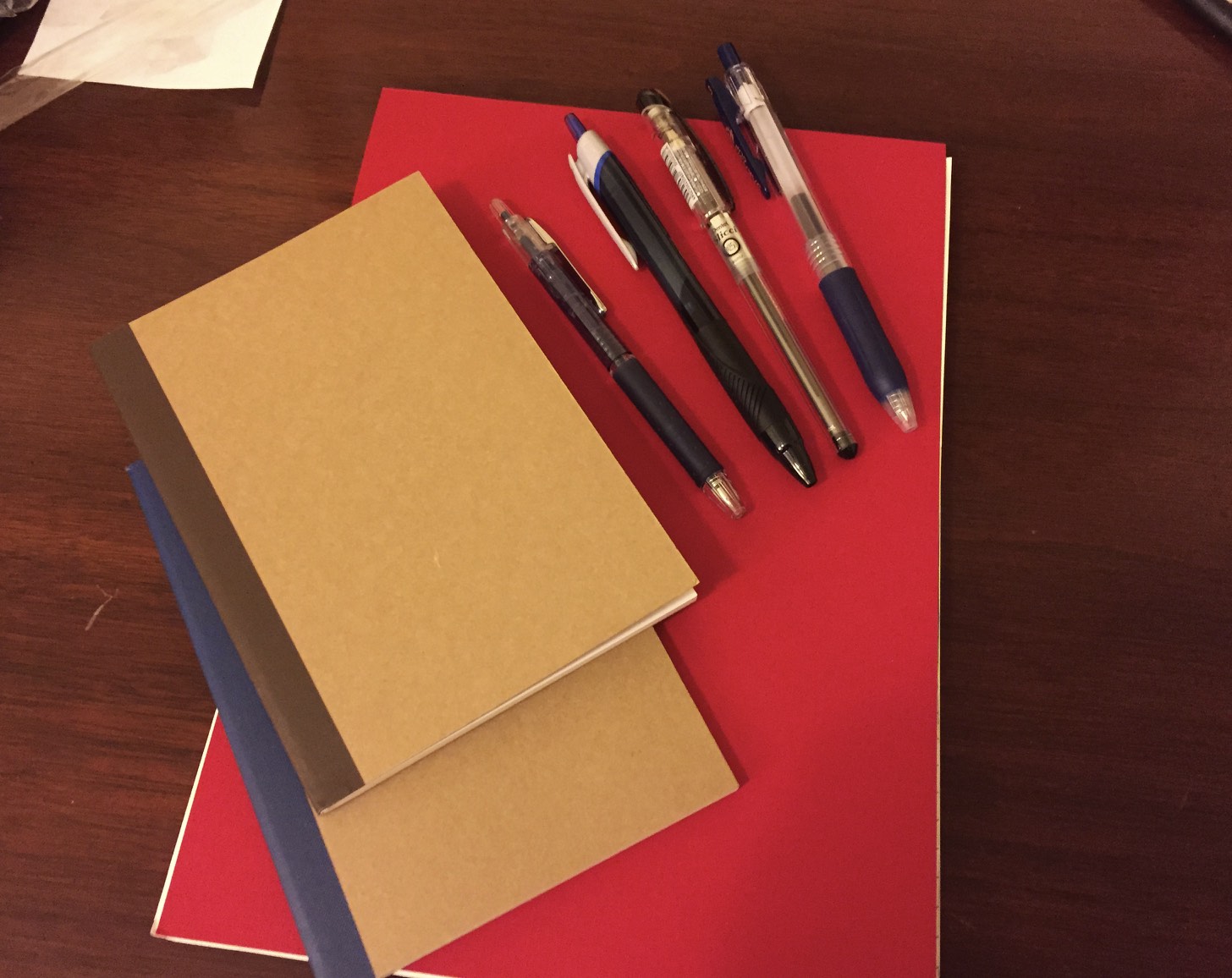I’m now struggling with a new, albeit nascent, addiction, courtesy of Massdrop. For the past year, thanks to people such as Harry Marks and Patrick Rhone who have written lovingly of their vintage manual typewriters, I’ve been wanting one. And I can say that I’ve successfully resisted. In full disclosure: this is not so much a testament to my own willpower as it is to my fear of my wife, who made clear in no uncertain terms that a “typewriter collection” was not in our future. So needless to say, I’ve been hunting around for the next best thing.
Like most people today, and especially office professionals, I do the majority of my daily work on a computer. While I enjoy writing things by hand, the vast majority of my work (for both the day job and the side hustle) needs to be typed in order for the end product to be legible and usable to someone other than me. The problem is that I generally hate using computers to write, especially the (five-year old) Dells we use at the office. There’s no character to typing on modern keyboards, no satisfying click/clack feedback that you used to get from a typewriter. (You purists out there—put aside for the moment that nothing compares "character-wise" to the sensation of putting nib or pencil to paper. I agree with you. But you must admit, it’s not always possible, much less practical.) I’m old enough to have learned to type on my Dad’s old IBM Selectric typewriter (later, the PC Jr.) and Apple IIs at school, and for those of you who have not had that typing experience, it was light-years from what we have today. Much louder, of course, but that’s part of the fun.
Needless to say, I was intrigued when I was surfing Massdrop last week and came across an entire new product category that I had been completely unaware of. Mechanical Keyboards (link here). So what’s a mechanical keyboard? I’ve done some intensive research (read: wasted a lot of time on the internet and spent a lot of money) over the past two weeks and feel that I have enough of a rudimentary understanding to write this review and explain, in lay person terms, the difference between a quality mechanical keyboard and the $15.99 piece of crap that in all likelihood is sitting on your office desk or is attached to your work-issued windows laptop. **DISCLAIMER: I now own two of these things. I first purchased one (a Corsair K70) at Best Buy on a lark so that I could try it and easily return it if the experience was not everything I wanted. Two days later, I had purchased another so I could have one at home and one at work. You’ve been warned.**
Your typical keyboard these days is what is called a “membrane keyboard.” With my limited technical knowledge, I can best explain it as follows: the plastic keys, when depressed, put pressure on a “membrane”—essentially, a rubber mat overlaid with electrical circuits—which relays a signal to the computer that registers the keystroke. Because membrane keyboards have few moving parts, and the keys don’t have to travel very far to “actuate” (I.e., register a keystroke) they are very light, very quiet, and, most significantly, very cheap to manufacture. On the other hand, they are not very accurate, and frequently lead to common typos such as a keypress not being registered, or a key registering a double press. (Leading to typos such as “OMG I hte this keyboardd.”)
Membrane keyboards offer a very different experience from the keyboards that I used growing up, when I learned to type in middle school. Those keyboards were loud, as in, nearly as loud as typewriter keyboards. At school in the late 1980s and early 1990s, we worked on Macs featuring the old Apple Extended and Apple Extended II keyboards. At home (before my parents caved and bought us a Mac), we had an IBM PC Jr. with the full-size Model M keyboard. Perhaps some of it is simply nostalgia for the time when having a computer at all was a novelty, but I just remember that those keyboards (and those computers in general) were much more fun to use. Today’s computers, which all have the low-profile, cheap plastic chiclet keyboard that weights 3 oz and feels like you could break it over your knee (or maybe even with your bare hands), just aren’t.
My Corsair K70 mechanical keyboard, on my desk at work. The keyboard is much heavier than the Logitech Wave it replaced, and doesn't slide all over the place. The wrist-rest is well-constructed and fits my hands/wrists perfectly.
Enter the mechanical keyboard. The Apple Extended and IBM Model M keyboards were both what would be termed, in today’s lingo, “mechanical,” which means that each individual key features a three-part mechanical switch containing a keycap, a stem, and a base. When the keycap is depressed, it pushes the “stem” down into the “base” of the key, which registers the keystroke (using technology I don’t understand won't try to explain here) and sends a signal to the computer. The result is a more tactile sensation than that offered by a membrane keyboard. When typing on a mechanical keyboard, you can tell that the key has been pressed. Some mechanical keyboards will “click” when the key actuates. Clicky keyboards are great for typing, it saves the typist from having to press the key all the way into the base of the keyboard (called “bottoming out”), thereby placing less stress on the typists hands and wrists, and increasing overall typing speed. It sounds crazy, but I swear it works. And it’s about as close to the analog typewriter experience as you’re going to get, while still having the convenience of having your work saved on the computer.
So how do you know what mechanical keyboard is right for you? It depends on what you are going to use it for. Most mechanical keyboards that you will find in brick-and-mortar stores like Best Buy are marketed towards gamers, because PC gamers value the greater precision that a mechanical keyboard offers. Gaming keyboards generally feature non-clicky switches, to reduce noise when playing online. Non-clicky, less tactile switches include Cherry MX Red and Cherry MX Black switches. (Cherry is a keyboard manufacturer that has been around since the 1960s, billing themselves as the oldest existing keyboard company. Their components are very highly regarded. Most reviewers advise that you can't really go wrong with Cherry or Alps branded switches.)
My Cherry MX Blue mechanical keyboard with switch exposed. The keyboard with the Blues otherwise looks identical to the keyboard with the Reds.
If you type a lot, like I do, and are actively searching for a more tactile and clicky (even, dare I say it, loud) experience, go for the Cherry MX Blue switches. Fans of the Apple Extended II Keyboard, which many regard as a classic, should look at a company called Matias, which has released an updated version of that keyboard called the Tactile Pro which features Alps branded switches, and generally gets good reviews. Those nostalgic for IBM can purchase a modern version of the Model M keyboard from Unicomp. Obviously, I haven’t used all of these different brands—my notes here are based on brief internet research—but I can give you my take on the two keyboards I have. Note: Some keyboards are set up with the Mac layout, others with Windows. My understanding is that since most of these are USB keyboards, they will work on either. The Corsair works fine on Mac, although you can't use their proprietary software to program the keyboard and will have to go through the OSX utilities.
The Corsair K70 features a brushed aluminum chassis and high-quality black keycaps. The keyboard also features an LED backlight (in red, my favorite color), although there is a higher-end RGB backlight version that is entirely customizable and capable of setting a different color backlight for each key. (As you might imagine, it's more expensive.)
As I mentioned earlier, I first purchased a Corsair K70 at Best Buy. The Corsair is a relatively low-profile (for a mechanical keyboard) made out of black brushed aluminum. It’s modern and sleek, and has red LED backlights for working in low-light situations. The particular model I purchased is a gaming keyboard, and features Cherry MX Red Switches. While it has nice, springy keys and a decent amount of tactile feedback, it’s still relatively quiet and is appropriate for work. I keep this one at the office, where our hallways echo terribly. Liking this keyboard a lot, but still chasing that “typewriter-like feel,” I purchased a second Corsair K70 with Cherry MX Blue switches. This one is by far my favorite, and I keep it in my home office.
In short, I love both my mechanical keyboards. This past week, I’ve enjoyed working on a computer again, which has made me more productive. I don’t dread transcribing my handwritten notes or work product as much as I used to. My typing is definitely faster and more accurate.
That’s not to say that mechanical keyboards are without drawbacks, or are for everyone. For one thing, they can be very loud. My Corsair with the Cherry MX Blue switches is easily as loud as some typewriters. It wouldn’t be a good choice for someone working in a shared space, or even an office with a bad hall echo. Your co-workers might hate you. Also, mechanical keyboards are more expensive than membrane keyboards. Be prepared to spend anywhere from $100-150 for a decent quality mechanical keyboard, although some good deals can be had on Massdrop from time to time. Once you spend this money, though, they keyboard should last you a long time. While keys on a a membrane keyboard lasts for perhaps 5 million actuations, quality mechanical switches can last for anywhere from 20-50 million actuations, depending on the type of switch.
If you’re interested in trying out a mechanical keyboard (or, like me, are interested in how they sound) spend some time on Youtube. There are plenty of clips offering samples of the various keyboards and types of switches. In terms of buying mechanical keyboards, B&M stores like Best Buy might carry a few models of gaming keyboards, but unless you live in a larger metropolitan area with lots of specialized computer stores you will probably have to go online. One great website that has a huge selection is MechanicalKeyboards.com. If you are a registered Massdrop user, you can also find some good deals on what appear to be more boutique brands. I ended up purchasing from Amazon to take advantage of my Prime shipping on the Corsair, which was a heavy purchase. If you're considering going mechanical, and purchasing one of the products reviewed, I'd appreciate you using one of my links to help support the site. This new addiction looks to be expensive.






